3rd Symposium on the Element Strategy Initiative (to Form Core Research Centers) and Large-scale Research FacilitiesToward the understanding of the mechanisms of material functionalities inspired by new theories, and their industrial applications
Report on the 3rd Symposium
The 3rd Symposium was held in Ito Hall at the University of Tokyo on February 5 (Mon.) and 6 (Tue), 2018, with a total of 340 participants over the two days. In addition to research topics in the Element Strategy Initiative, presentations included results from outside projects that reflected the diversity of the participants and led to expansive discussion.
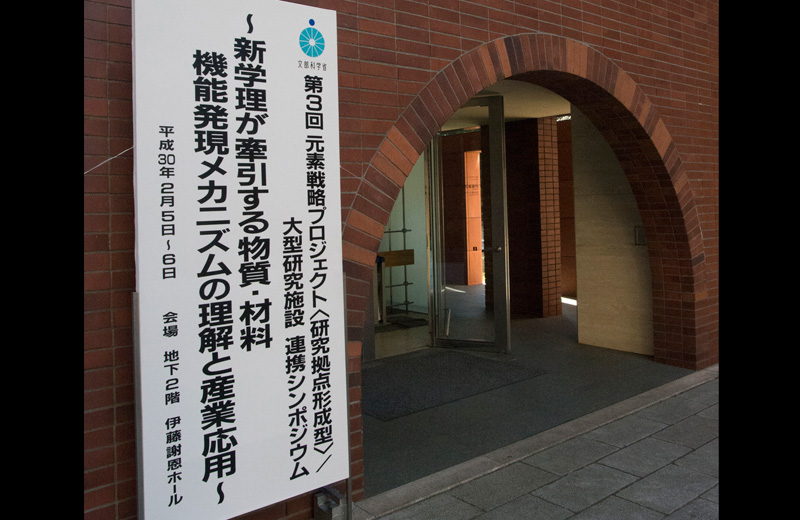
Entrance to the symposium venue
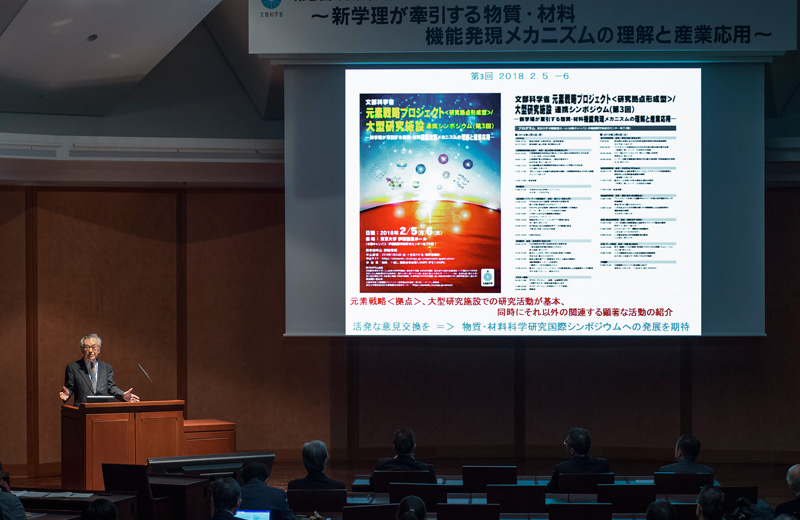
Hidetoshi Fukuyama, expert advisor to the Management Committee of the Element Strategy Initiative, details the activities of the Element Strategy Initiative: To Form Core Research Centers, and describes the function of the 3rd Symposium.
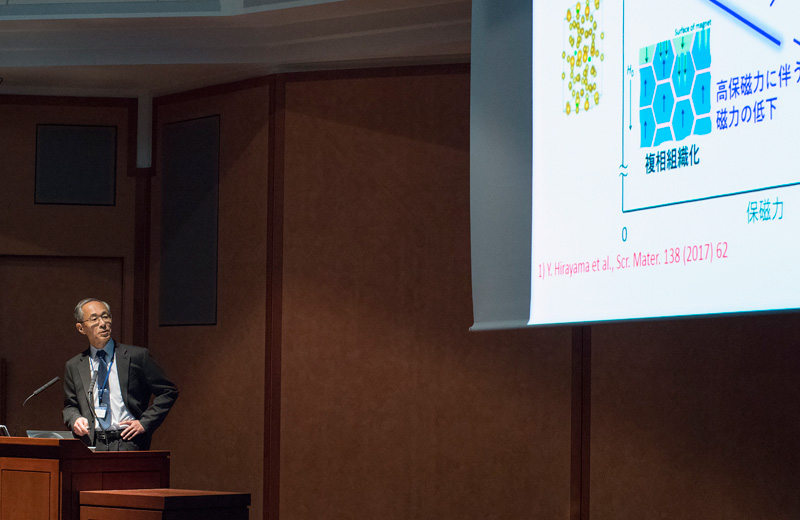
Satoshi Hirosawa, director general of ESICMM, presents research results in the area of magnetic materials. A goal of the research center is to control multiphase structures of magnets in order to draw out the ultimate performance as expected from the inherent properties of the material.
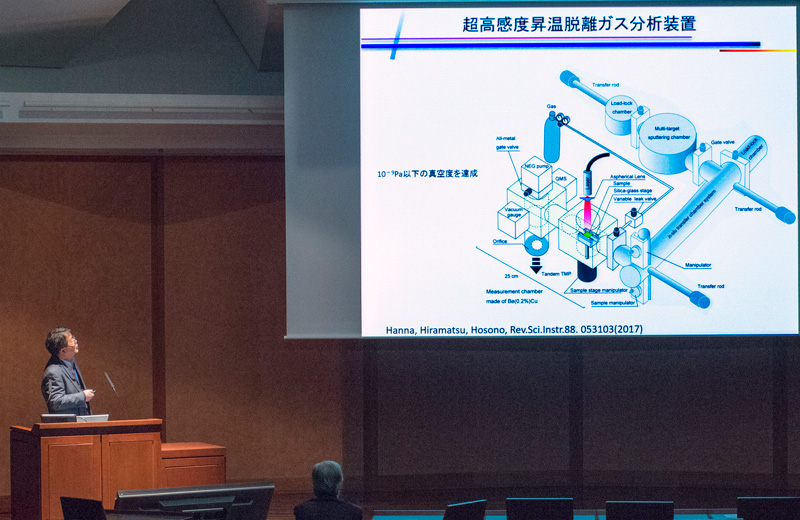
Hideo Hosono, representative of TIES, presents research results in the area of electronic materials. The research center developed a thermal desorption gas analyzer with detection sensitivity on the order of ppm to clarify the relationship between hydrogen impurities and property degradation in amorphous IGZO semiconductors.
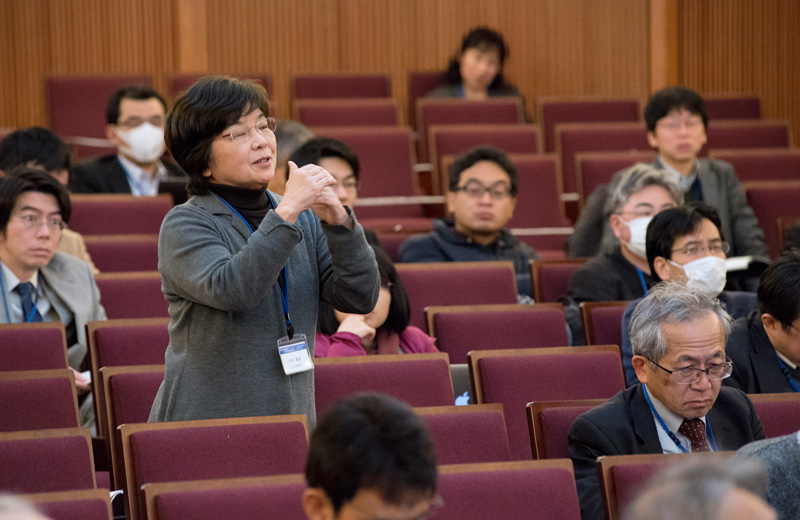
Program committee member Maki Kawai inquires whether deuterium is useful for detecting hydrogen impurities.
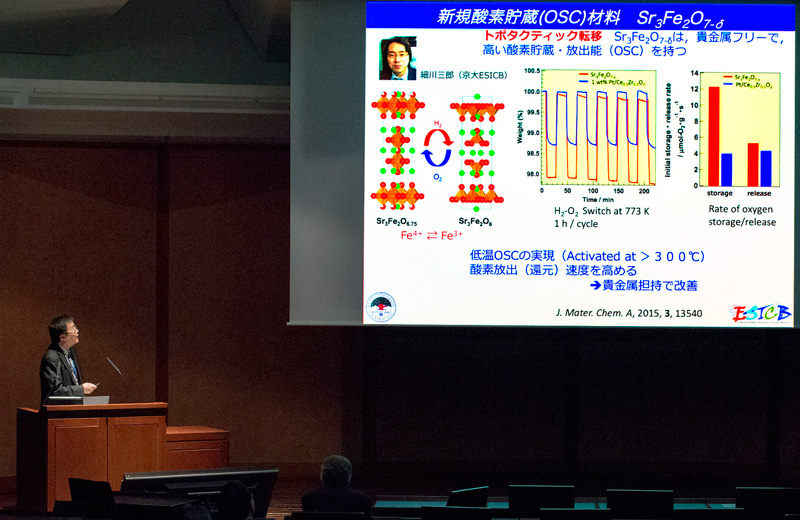
Tsunehiro Tanaka, director of ESICB, presents research results in the area of catalysts and batteries. The research center worked to develop high-performance catalysts free of rare elements and discovered a new electrolyte solution gualanteeing high performance and safety.
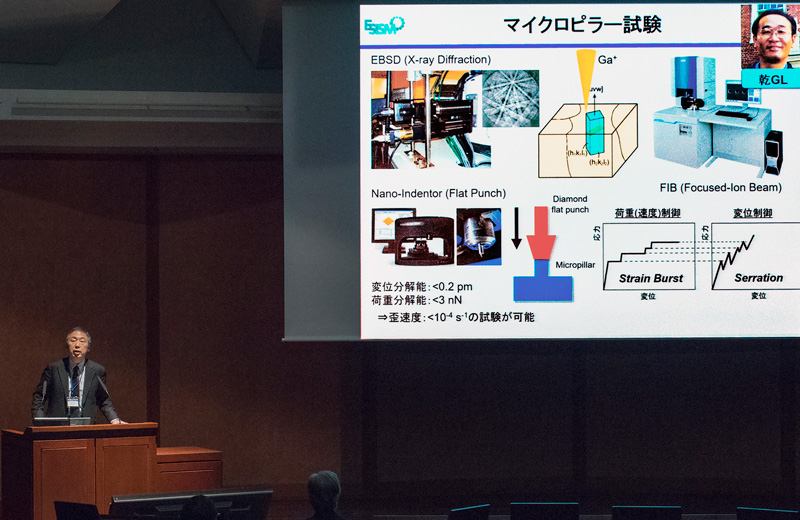
Isao Tanaka, director of ESISM, presents research results in the area of structural materials. The research center discovered a phenomenon in which both strength and ductility are realized in bulk nanostructured titanium.
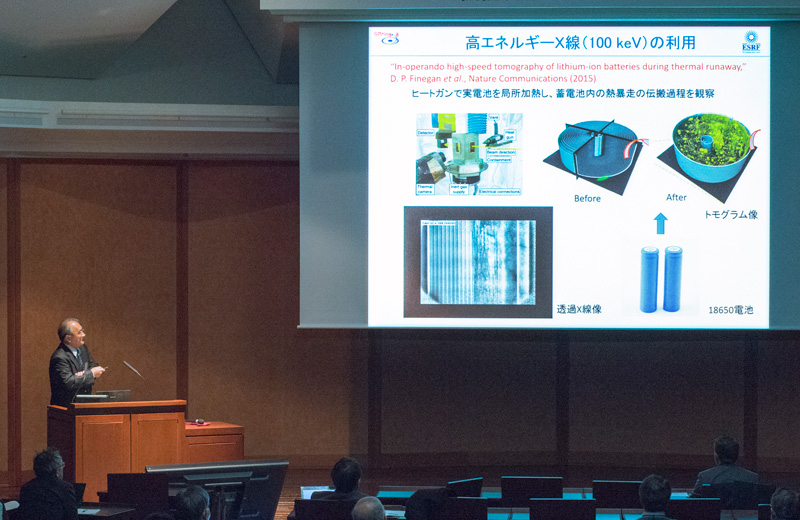
Yoshiharu Sakurai, director of the Research & Utilization Division of JASRI, presents materials science findings at SPring-8 and their industrial applications.
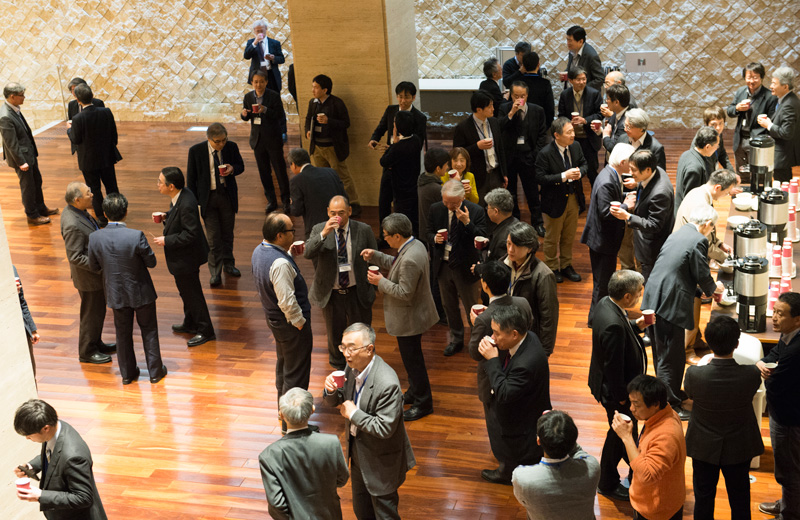
The coffee break provides an opportunity for mingling and conversation.
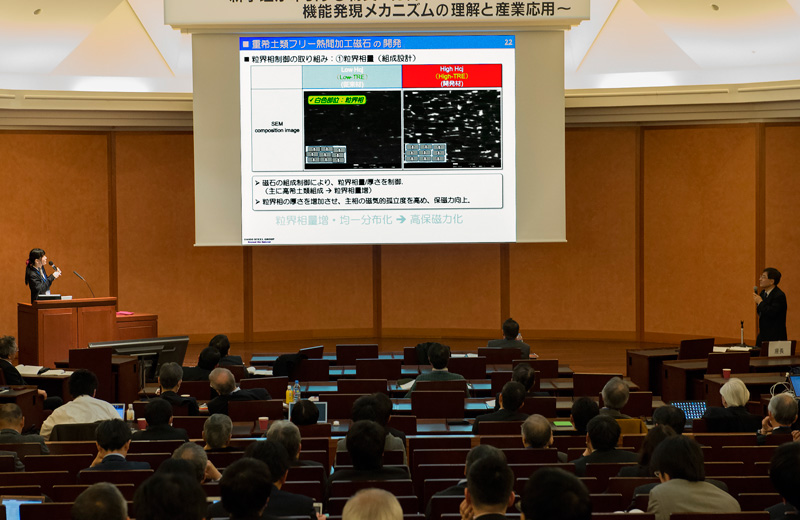
Keiko Hioki of Daido Steel presents research results in an invited lecture. The company developed a neodymium magnet that is free of heavy-rare-earth elements and achieved mass-production of magnets for use in traction motors of hybrid vehicles.

Poster previews: One after another, thirty-nine presenters try to make the most of their one minute of allotted time.

Poster session: According to a new method of classification this symposium, posters were classified, not by research area, but under the categories “challenges for industry,” “research on real-world applications,” “advanced analysis for understanding material functions,” “exploring new materials in extreme environments,” “investigating theories (materials),” and “investigating theories (computation/data).”
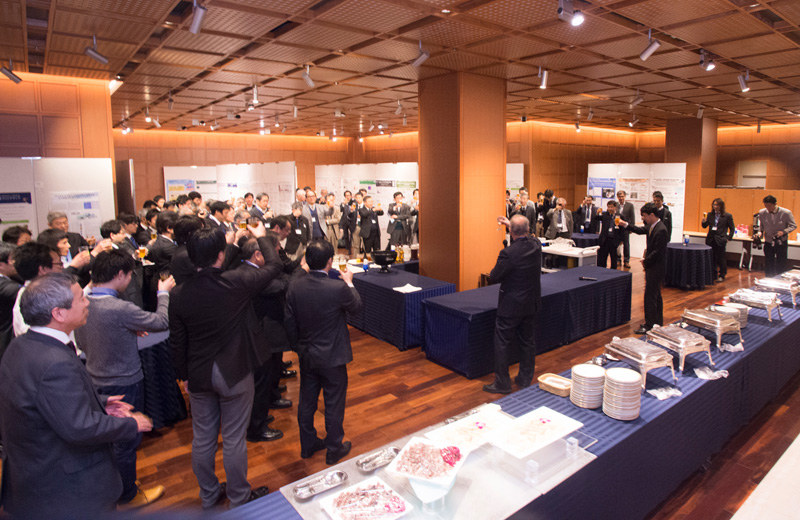
Masatoshi Takao, former specially appointed professor at Osaka University, speaking at an informal gathering.
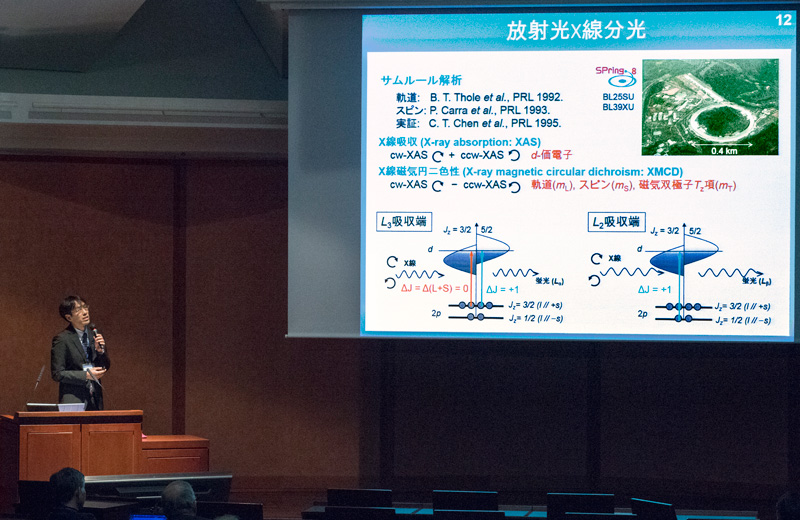
Shinji Miwa, associate professor at Osaka University, conducted synchrotron X-ray spectroscopy experiments at SPring-8 to clarify the mechanisms of VCMA.
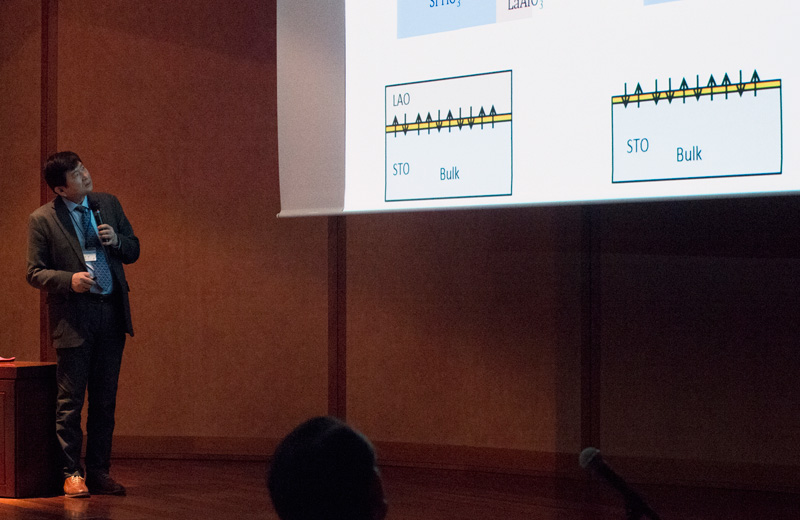
Shik Shin, professor at ISSP of the University of Tokyo, developed a novel photoemission electron microscope with an ultraviolet laser that achieved the world’s highest resolution and succeeded in visualizing ferromagnetism in oxide surfaces and interfaces.

Hidetoshi Fukuyama, expert advisor to the Management Committee, poses a question during the Symposium. Questions were asked on nearly all topics of discussion to explore potential for development.
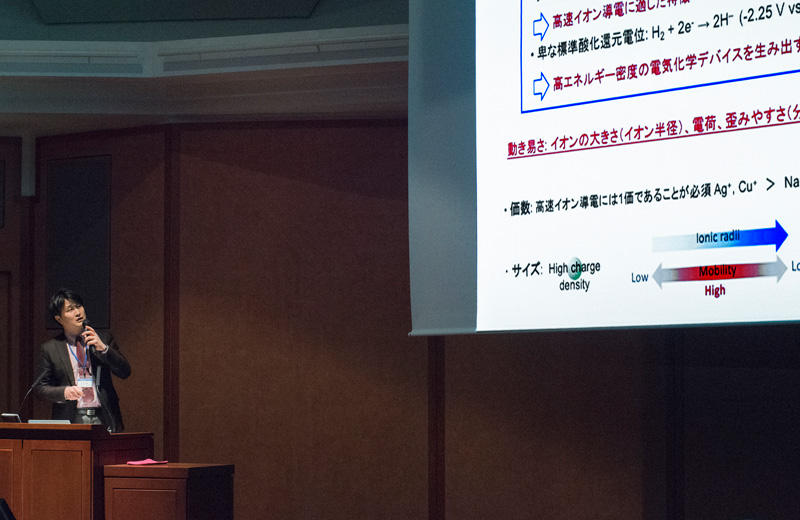
Genki Kobayashi, associate professor at the Institute for Molecular Science, developed the new material LSLHO focusing on the excellent characteristics of hydride (H-) as a charge carrier and created guidelines for designing materials with higher ionic conductivity.

Jun Takahashi of Nippon Steel & Sumitomo Metal Corporation visualized steel at the atomic level to elucidate the mechanism of hydrogen embrittlement and proposed hydrogen trapping sites.
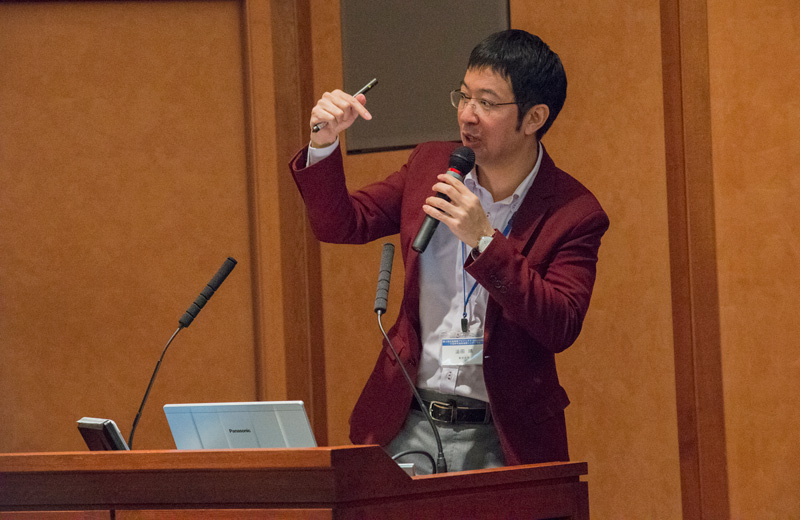
Yasushi Shibuta, associate professor in the Department of Materials Engineering of the University of Tokyo, responds enthusiastically in the Q&A session.
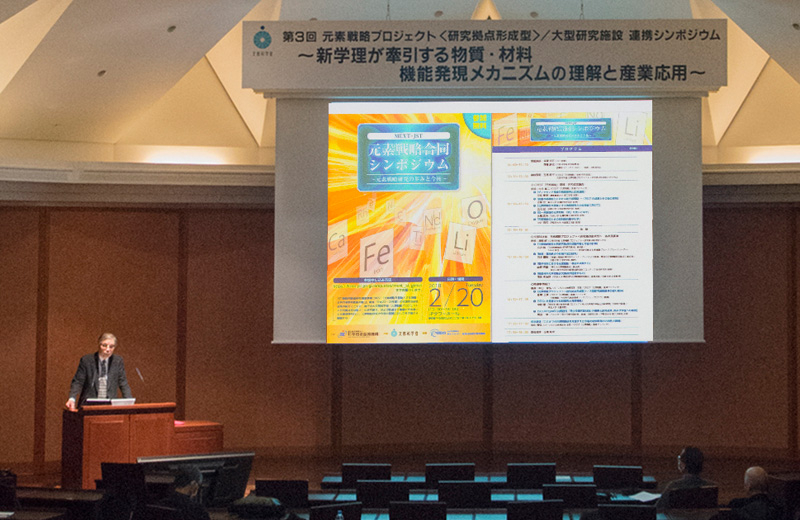
Bringing the Symposium to a close, Kohei Tamao, associate program director, talks about his expectations for the coming four years of the Element Strategy Initiative: To Form Core Research Centers. He takes over as program director in 2018.